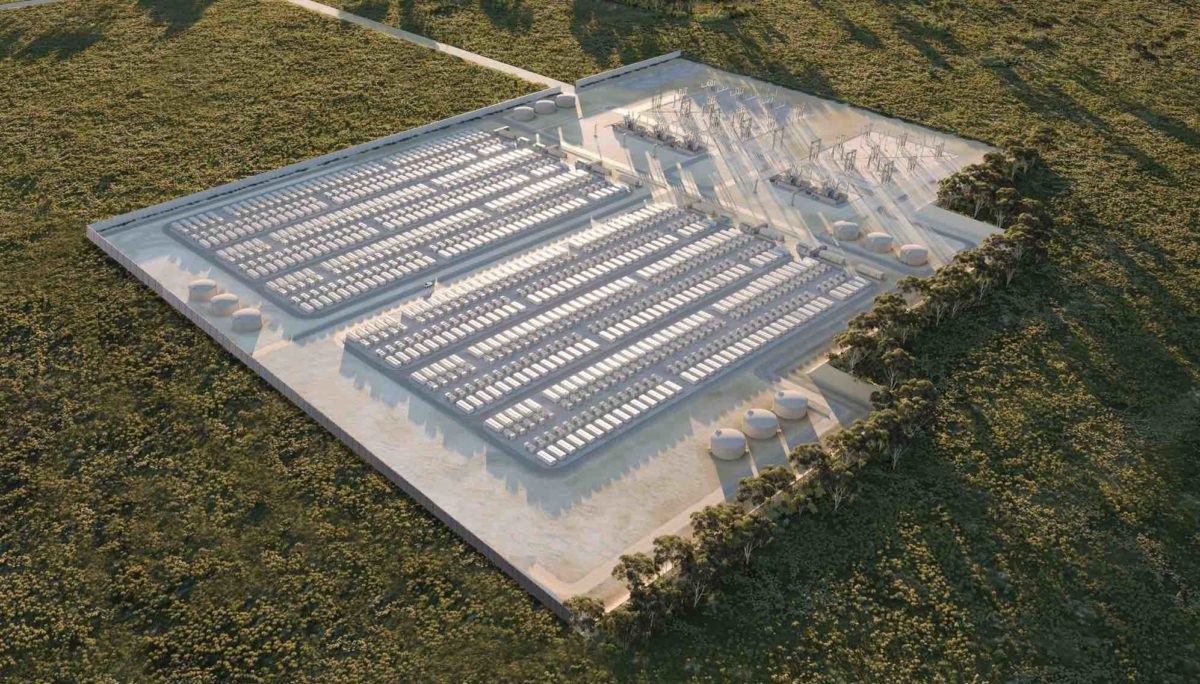A huge $1.9 billion battery storage project on the outskirts of Melbourne that has been branded as the country’s “biggest battery” has been resized, reshaped, renamed, and relaunched under its new owners, the rebadged Singapore based Equis Developments.
The Melton Renewable Energy Hub was first unveiled in August, 2021, by its then owner Syncline Energy as a 600MW/2400MWh project that rated as the biggest in the country.
It sat on an attractive point in state’s main 500kV transmission backbone, just 25kms from Melbourne, and was supposed to reach “financial close” earlier this year.
Instead, the project has been bought by Equis, as part of a re-launch of that brand and its package of half a dozen battery storage projects around the National Electricity Market, and some wind farm developments in Tasmania.
The now re-named Melbourne Renewable Energy Hub is the biggest project in that portfolio, and has been re-sized from 600MW to 1200MW of battery capacity, but with a similar amount of storage, 2,400MWh.
According to Equis, it will be split into a “unique design” of six distinct projects, each with their own connection to the grid, and will be rolled out in two 600MW stages, with the first expected to start development in the second quarter of 2023 and start operations in 2024.
(It’s actually not that unique, Edify Energy is adopting a similar strategy to the rollout of its series of three big batteries at the Darlington Point substation in NSW).
The 200MW blocks do make sense because it allows the developers to split the battery into different merchant and contract arrangements, as Edify has done at Darlington with the likes of Shell and EnergyAustralia.
It is understood that contracts for the battery storage project have yet to be signed with any customers, and the initial three points of connection are still being reviewed by the Australian Energy Market Operator.
Equis says the battery project – which it says will ultimately include a battery recycling facility and a hydrogen production facility tapping into Melbourne’s waste water – is ideally sited because of its proximity to the main 500kV line.
“The scale and uniqueness of MREH’s approvals and development mean it will be capable of providing both short and long hour storage and response services catering to the changing demands of the National Electricity Market,” Equis CEO David Russell said in a statement.
“MREH scale is also facilitating development work of a large scale battery recycling hub and hydrogen hub utilizing Melbourne’s excess sewage waste water. The result will be more investment and permanent jobs in the region.”
Equis estimates that the scale of the battery will allow it to support 1,600MW of solar generation or 1,200MW of wind generation and its strategic positioning will support Victoria’s Murray River, Western Victoria and South Victoria Renewable Energy Zones.
It says it is also the first to use underground transmission lines (albeit only one km) to a 500kV line.
“Four years ago, Syncline combed Victoria for the ideal location to build a large scale grid storage battery which would partially replace the State’s ageing fleet of coal generation plants,” said Phil Galloway, the head of Syncline, and who remains involved as developer of the project.
“We needed enough space to operate safely and to minimise the impact on the community. It also had to be at the Metropolitan load center, to ensure that we could improve the reliability and resilience of the grid and materially support regional wind and solar energy.
“Finally, we had to connect at 500kV to deliver the volume of energy that is required when Australia’s large thermal generators retire over the next 10-years. MREH was the ideal location.”
Equis is backed by the Abu Dhabi Investment Authority and Ontario Teachers’ Pension Plan Board and says it is currently developing 39 renewable energy, battery storage and waste infrastructure projects in Australia, worth more than $6.5 billion.
The battery will use LFP battery technology to be provided by the Finland-based Wärtsilä.
See RenewEconomy’s Big Battery Storage Map of Australia










